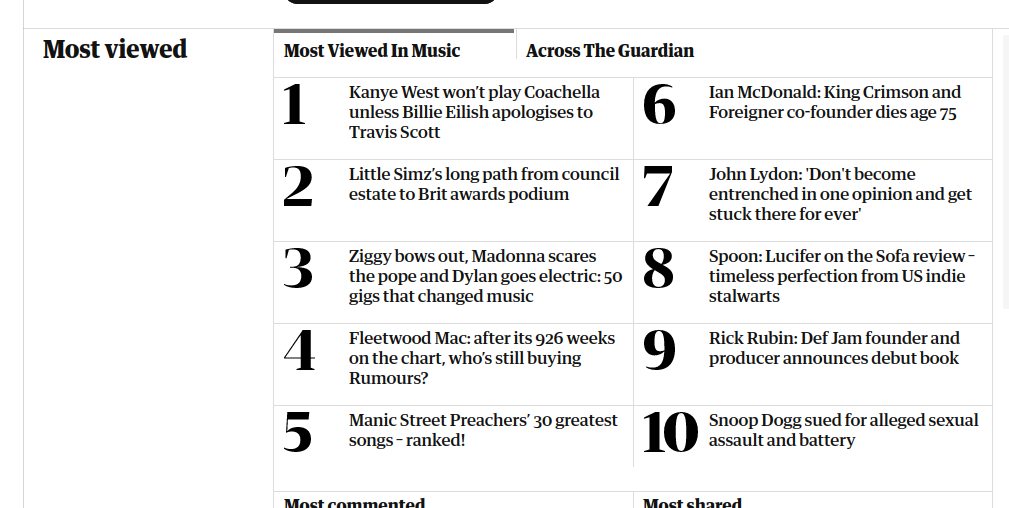Track 3, “In The Traditions”, is nice, even if I say so myself … I thought I’d lost the master, but dBrown has all these things in some cupboard somewhere.
From the history of Andalusia
Quem Deus vult perdere, prius dementat: when the gods have decreed that a king must fall, they fill him first with folly.
The Moors in Spain, Stanley Lane-Poole
Would that it were so for our current nemesis, the self-proclaimed Tsar of All the Russias.
Pluralistic ignorance
In an article in the Atlantic asking why 1M deaths seems to have been normalized, the end of the article discussed changes that we could make as a society to address this and the next pandemic in more effective, more equitable ways, and then said this:
Such changes are popular. Stephan Lewandowsky, from the University of Bristol, presented a representative sample of Americans with two possible post-COVID futures—a “back to normal” option that emphasized economic recovery, and a “build back better” option that sought to reduce inequalities. He found that most people preferred the more progressive future—but wrongly assumed that most other people preferred a return to normal. As such, they also deemed that future more likely. This phenomenon, where people think widespread views are minority ones and vice versa, is called pluralistic ignorance. It often occurs because of active distortion by politicians and the press, Lewandowsky told me. (For example, a poll that found that mask mandates are favored by 50 percent of Americans and opposed by just 28 percent was nonetheless framed in terms of waning support.) “This is problematic because over time, people tend to adjust their opinions in the direction of what they perceive as the majority,” Lewandowsky told me. By wrongly assuming that everyone else wants to return to the previous status quo, we foreclose the possibility of creating something better.
Today I was talking with Paul about people taking on the opinions of the group they live in, which sounds like a related phenomenon. Our beliefs are structured by our understanding of what the people around us believe, sometimes correctly, sometimes because that’s what we are told they believe.
How difficult it must be for the population of Russia to understand the situation in Ukraine.
Killing Eve, Season 3
Man. All the reviews were pretty meh, but I’m loving it. All the talk is about Eve and Villanelle, but Caroline is the bomb.
Law as code
I remember Lessig talking about this. What if we treated the law (as regards technology products, anyway) as if it were a set of regression tests that all new code had to pass? So, you express the legal constraint in some sort of test-able way that the authors of the law agree constitutes a valid expression (“all users of the software must be able to easily erase any record of the history of their usage of the software” => a test spec: sign up as a user, do some things, find the mechanism to erase history (perhaps limited by number of clicks or time involved or … to provide a metric of “easily”), execute it, verify that history is in fact unobtainable.
As the law evolves, the test suite evolves. As the software evolves, it is constantly re-tested against the latest version of the test suite.
Legal terms, such as “reasonable”, “easily”, … tend to be well-defined within the context of the law. As such, they’re like shortcuts, and perhaps can be implemented using something like Prolog.
no, wait: Lessig’s formulation was “code as law”, precisely the opposite: the embedding of social values, etc, into technological artifacts (consciously or not).
cf: “smart contracts” in blockchain. otoh, witness the lack of transparency in machine learning, which can result in seemingly arbitrary decisions and classifications with no explanation of their rationale. Interesting reading in “The Expansion of Algorithmic Governance: From Code is Law to Law is Code”, Hassan and de Filippi, https://journals.openedition.org/factsreports/4518
Waterborne housing
Not houseboats. An apartment complex. Amsterdam permitted this a couple of decades ago, and it was complete by 2011. Prefab houses built on concrete tubs that are half-submerged as ballast, anchored to the bottom. Beautiful, and practical, and a few other cities are starting to think that, with 1m sea-level-rise, they should start looking at how to add flexible housing like this.
Heather Cox Richardson is Tom Paine
I think she is playing the role that Tom Paine played. Explaining what’s what for the common man.
George Crumb died
Oh. I’m getting to that age, where all the people I used to look up to are disappearing.
The Guardian and Music
Screenshot of the top 10 Music stories on the Guardian website today:

King Crimson, John Lydon, Madonna, Dylan, Fleetwood Mac, Def Jam, Snoop Dogg … wow. Music hasn’t moved on much since I was a kid.
Jon Appleton, composer and Synclavier innovator, has died – CDM Create Digital Music
https://cdm.link/2022/02/jon-appleton-composer-and-synclavier-innovator-has-died/
When I was running sound at the U of Auckland, they held a conference and Jon Appleton presented the Synclavier. He came to me before he gave the paper and asked that I make available four channels of audio input, set the levels once, and then leave the board alone. Intrigued, I attended the presentation.
I was completely blown away. I’d dabbled in analog electronics for audio since high school, but this presentation set me on a course of working with computers to make music.
I got in touch with Appleton when I was in the US, asking about graduate school. He told me not to bother, to just keep working in the field outside of academia. Glad I didn’t listen to him and joined the CCM at Mills instead. Interesting note: Larry Polansky, one of my thesis advisors, ended up running the department at Dartmouth where Appleton taught.